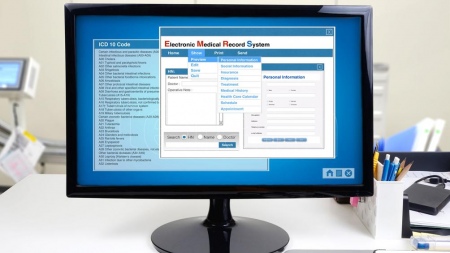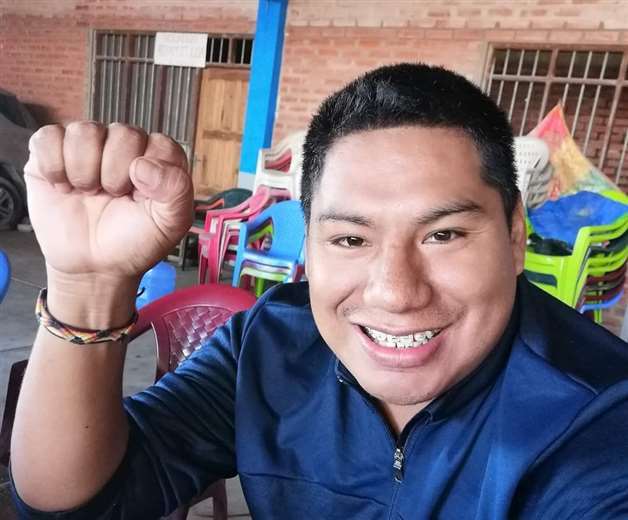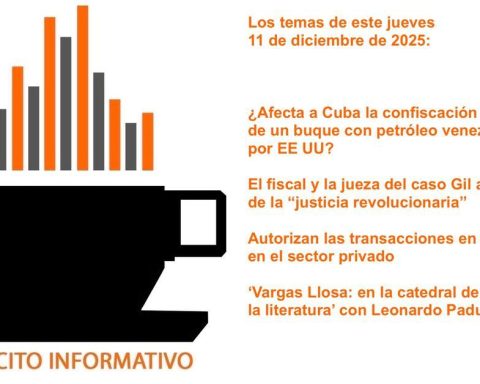The digitization of medical records at the national level will be key to “improving the quality and times of care, optimizing resources and developing health policies”, highlighted specialists, noting that the main challenges lie in the interoperability of the sectors and the confidentiality of information.
The unified digital medical record “It is fundamental for multiple reasons,” said the former superintendent of Health Services, Rubén Torres, in dialogue with Télam.consulted for the bill that proposes the creation of the Single Federal Program for Computerization and Digitization of Medical Records, included in the agenda of the next extraordinary sessions of Congress.
“It will make it possible to have a database to design health policies, obtain information on the epidemiological situation in Argentina, which we currently have partially; it will improve the quality of care because it would reduce care times and spending on health services would avoid repeating studies” , completed the also president of the Institute of Health Policy, Economy and Management (Ipegsa).
“It will allow having a database to design health policies, obtain information on the epidemiological situation in Argentina, which we partially have today”Ruben Torres
In Argentina, there are already digital medical records implemented by obras sociales, prepaid and provinces.
However, “there is no integration of that information,” a “key” aspect that the law must consider, “otherwise it is useless,” Torres asserted.
The Italian Hospital, one of the private institutions with experience in the subject, more than 20 years ago began developing its own software that was optimized over time with a focus on staff trainingchange management focused on respecting care processes and the portal for patients.
“It was an attempt to generate a clinical history that would adapt to the way of working,” the chief physician of the Department of Health Informatics at the Italian Hospital, Daniel Luna, who has worked there for 30 years, explained to Télam.
Currently, there are more than a million patients registered on the portal.
The patient “can see some things, not everything, the rest have administrative and legal processes so that they can take all the information. We are working on access to the complete clinical history, although no one requires us to do it online, we do it as a surplus value for patients”, completed to Télam the doctor Fernando Plazzotta, head of Informatics for the Community of the health center, and specialist in Medical Informatics.
From the perspective of these doctors, the concept of the standard should not be a “single” clinical record but an “integrated” one, and the State should act as the “guide of the information highway” by issuing the standards to define the interoperability guidelines between the systems. of the different sectors and “not as a central repository”.
“Today the information is like in silos and patients are jumping from one provider to another with their information to have ‘continuity of care’. Many times, not having information delays the care process“, explained Luna, who also has a Master’s Degree in Information Systems Engineering.

In the country, there are four subsectors of Health: public, private, social security and union social works.
In the country, there are four subsectors of Health: public, private, social security and union social works
The regulation of the norm will then require the coordination of the national, provincial and municipal levels, in turn transversal to these four subsectorshe added.
For the physician, the objective is “to achieve ‘information continuity’ between the systems to support ‘continuity of care’, and for information to flow through the systems accompanying the patient”.
The standard, he considered, is “a very good first step” to “provide a framework and establish rules regardless of the subsector where you are.”
Regarding the role of the State, he said that it must “provide all the mechanisms to act as a control tower or pivot so that information, with the patient’s autonomy, can flow.”
In addition, The doctors agreed that the challenges of the bill will be interoperability and data confidentiality, two “possible” aspects to implement, because there are countries that have done so, such as Uruguay, Canada, and Australia.but “it is not a technical problem, but an organizational and regulatory political problem”.
“The information system will always be the shadow of what the health system is like. Countries that have had a good, albeit slow, track record in health information systems had a previous health reform,” Luna warned, noting that in Argentina “everything is very atomized and fragmented and nobody wants to move anything.”
However, “the modernization of the health system will require a backbone with information systems, (…) what is missing is the consensus to be able to put it together,” he said.
On confidentiality and data security, they pointed out that it is “a concern” for patients and professionals because it is sensitive information and must have an adequate safeguard mechanism.
Some of the data that appears in the medical records refers to surgical interventions, history, medication that they are taking, allergies to medications or food; and may include images and studies.
In this regard, Luna noted that “The pandemic made it clear that information systems from a health point of view were weak and must be strengthened by seeking models that respect the concept of privacy and security“.
Meanwhile, Plazzotta maintained that “the application of information technologies cannot be delayed due to the risk of cyberattacks”, but rather “it is necessary to consider them, define security standards, information recovery and back up policies”.
Among the advantages of digital information, the doctors highlighted that it “generates a footprint”, that is, it leaves records of income and changes, as opposed to information on paper.
“Many times what happened on paper is that little and badly written, there is a lot of underreporting, something that improves a lot with the information systems, where when accessing the medical history it is marked that someone entered,” the doctor told Télam. Head of the area of Innovation and research in information systems at Salud del Italiano, Sonia Benitez.
“What is also important is that the data serve to plan, and then predict patient trajectories, to see how improvement interventions can be carried out or to approximate diagnoses, aligned with the concept of precision medicine,” the expert concluded.



















